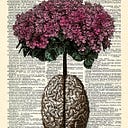Member-only story
Do tables really exist?
Hegel on sense-certainty
For the most part, the truth is a hard thing to come by. The truth about the world yields only to careful scientific techniques. The truth about others is shrouded in fronts and facades. Even the truth about ourselves is distorted by biases and self-deceptions.
But there’s one truth we can always rely on, which transcends all doubts and uncertainties: the simple existence of a given object. The fact that a table exists, for example, is so obvious and plainly apparent that it appears to constitute an absolute truth. The table just is: what surer certainty than this could we be possibly be aware of?
Intuitive as it is, the philosopher Georg Hegel disagrees with this idea. Because to encounter the sheer being of an object, which he calls sense-certainty, is actually a more subtle phenomenon than we first expect. And in fact, by the end, we’ll find it to be nothing less than mystical.
Sense-certainty as immediate knowledge
Most knowledge worth knowing is far from immediate. If we want to learn about how mountains are formed, or about the life-cycle of a star, we have to go about it in clever and subtle ways. These scientific facts, like many others, are extremely far-removed from our everyday understanding.
